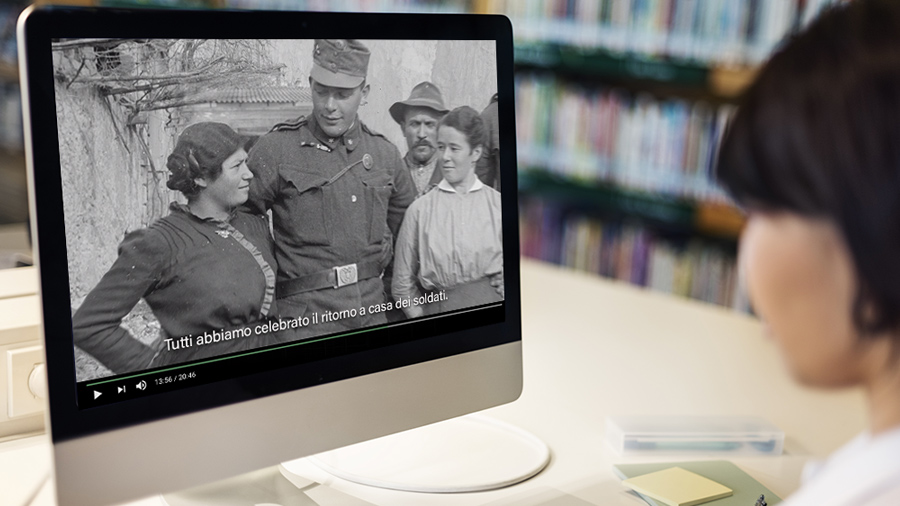How Do I Animate A Still Graphic On Adobe
Get a new perspective on a photo by separating foreground from background in Adobe Photoshop and adding parallax with a 3D camera in Adobe After Furnishings.

What you lot'll need
To create a convincing third dimension in a normal photo, start with a high-resolution image that contains detached elements that you lot can easily dissever into foreground and background layers in Photoshop. For example, use the Select and Mask workspace (Select > Select and Mask) to isolate figures in the foreground, remove objects with Content-Enlightened Fill, and retouch photos with selective uses of the Patch tool, Clone Stamp tool, or Healing Brush tool. The goal is to isolate objects in the foreground and provide sufficient elements — from i or more photographs — to create a disarming background. In our example, we brought in another photo to supply the missing details in the edifice.

Switching over to Subsequently Effects, import the layered Photoshop file as a Composition and accept the default Editable Layer Styles pick in the Import Kind dialog box. Press Control/Control+Due north to open up the Composition Settings dialog box. Gear up the dimensions smaller than the photograph. Drag all layers from the imported PSD file into the new composition so that the groundwork layer is on the bottom. With the layers selected in the Timeline panel, printing S to scale them in unison until they fit equally you lot wish in the viewable area of the Limerick panel. (If necessary, press P to reposition them too.) Finally, click the 3D Layer switch to make them all 3D layers.

Parallax animation relies on an adequate distance betwixt the 3D layers in z infinite. Starting with the meridian layer, press P and position it closer to you in z infinite (z < 0), then printing S and scale information technology back down to normal size. Position the background layer farther away in z infinite (z > 0) and and then scale it up. Any middle layers can stay where they are or movement slightly forward or backward, depending on the scene. The final image should look nigh the same equally earlier except that now at that place's altitude betwixt the layers.

The z-space positioning you choose for each layer depends on the relative distance between these objects in the original scene when the photo was taken. To replicate that shot, create a Photographic camera layer (Layer > New > Camera). In the Camera Settings dialog box, set Type to One-Node Photographic camera and apply a Preset focal length that suits the photograph.

Position the new Camera layer at the top of the Timeline console. To get a ameliorate perspective on the layers' relative positions and understand how the camera's movements affect the final parallax animation, open up the View Layout card at the bottom of the Composition console and choose 2 Views. Prepare one view to Custom View ane and proceed the other at Active Camera.

To create the parallax effect, simply animate the camera effectually 3D infinite. Twirl downwardly the Transform backdrop for the Photographic camera layer and keyframe Position and Orientation — and whatever other transform controls you desire to change over fourth dimension.

As yous experiment, y'all may have to press Command/Command+Z repeatedly to disengage an unsuccessful photographic camera movement. When you like what you see, add easing to the keyframes. Command/Control-clicking a keyframe uses Auto Bézier (circle), which tin can help smoothen the rate of modify.
With Adobe Stock, you have access to more than than 100 million high-quality, royalty-gratuitous images including photos, graphics, videos, and templates to leap-outset your artistic projects. Effort Adobe Stock and get 10 costless images.
Source: https://helpx.adobe.com/after-effects/how-to/animate-picture.html
Posted by: bonnerwerve1939.blogspot.com

0 Response to "How Do I Animate A Still Graphic On Adobe"
Post a Comment